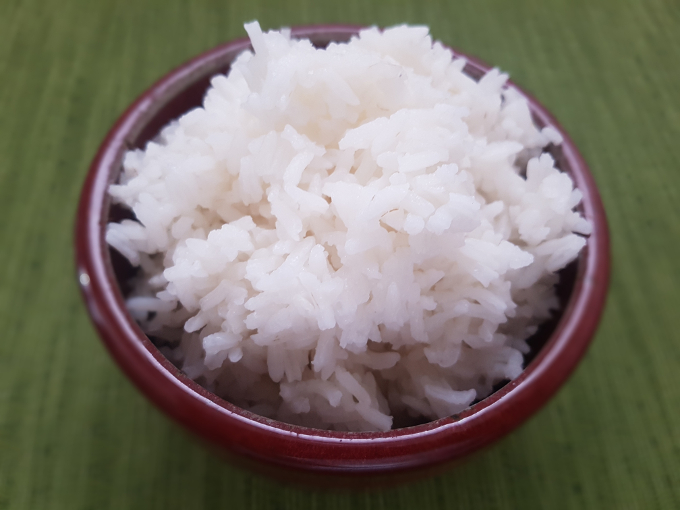
I chose to go with long grain white rice because it’s an excellent choice for a variety of tasty side dishes. Different types of rice such as brown rice and wild rice require different ratios of water as well as altered cooking times, so I’ve opted to keep it as simple as I could.
White rice cooks up fluffy and the grains remain separate. White rice is arguably the most common rice used in American cuisine when compared to other types such as jasmine or basmati which are both used in traditional Asian cuisine.
Medium and short grain rices cook up softer and stickier than long grain rice, due to the amount of amylopectin they have. The downside of cooking with long grain rices is that when they cool they can become quite hard and unappetizing. This of course can be remedied by adding some more water and reheating the whole thing.
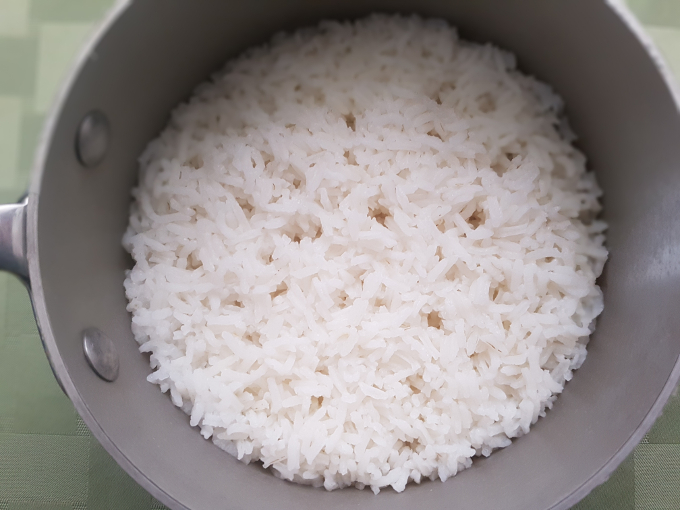
You should be able to see holes or little indentations where the steam escaped. If you see any liquid on or around the rice, it needs to spend more time steaming.
Let’s take a look at the reason why certain rices do what they do. All rice is grouped into one of three different categories: long grain (meaning the length is at least three times the width), medium grain (the length is around two times the width), and short grain (the length is less than two times the width).
All rice contains starch. Starch is made through a process called photosynthesis. Energy from the sun is used by plants to combine water and carbon dioxide to create simple glucose, or sugar molecules.
Once these molecules are formed, they will either link into long chains forming the kind of starch known as amylose, or they will instead link into many short, branching chains called amylopectin. Both types of starches are packed together tightly in granules.
Every plant contains both of these types of starches, however each plant has different ratios of amylose and amylopectin. Long grain rice has more amylose and short grain rice has more amylopectin.
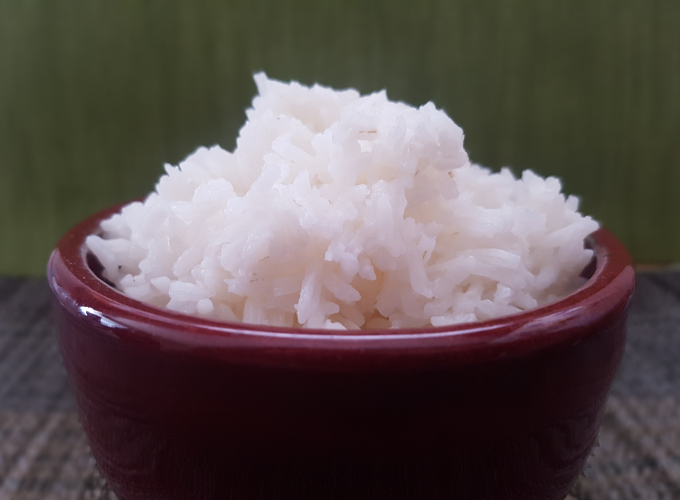
Heating the rice makes it release starch, with some types of rice releasing more than others. Heating starch in a liquid causes the molecules of both the starch and the liquid to mover faster allowing water to seep into the granules. As the temperature rises, more and more water gets in making the granules swell. When the temperature gets hot enough (around the boiling point of water) some of the swollen granules pop, and starch is released into the liquid. This thickens the liquid such as when you are making soup or stew.
In short grain rice, the starch which if you recall contains mostly amylopectin, swells up and pops somewhere between 160° F to 170° F (71° C to 76° C). High amylose long grain rice doesn’t finish swelling until it reaches about 200° F (93° C).
This means that in the same cooking time, long grain rice gives off less starch than short grain rice does, causing the long grain rice to stay separated and not clump together like short grain rice. Medium grain rice falls somewhere between the two in its starchiness.
When cooking rice in a pot, you’ll want to make sure (this is important!) that you have a tight fitting lid to keep the steam inside the pot, and you’ll also want that pot to have a heavy base to keep the rice from scorching on the bottom.
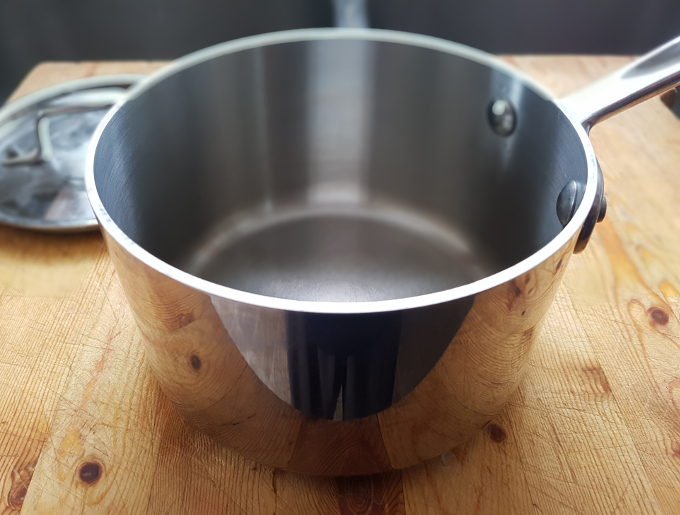
A heavy bottomed metal sauce pan is ideal for cooking rice as it allows the rice to steam without becoming scorched on the bottom.
A lot of recipes call for bringing water to a boil and then adding salt and stirring in the white rice. After that, the rice gets covered and the heat is reduced to low where the rice can steam until finished. Some recipes call for butter or vinegar to be added as well.
For simplicity’s sake, I prefer to add the water and rice to the pan, bring to a boil and then cover it before reducing the heat so it can steam until finished. The secret is to not lift the lid and check on the rice until it’s fully cooked. Getting excited and lifting the lid off halfway through its cooking time releases the heat and the steam and just generally messes everything up.
Now, there are two reasons you might think about rinsing your rice before you cook it. The first reason obviously, is to remove loose starch so the rice won’t be as sticky. The second reason is that some mills outside the U.S. use talc as a milling aid, so it can be important to remove it from rice that’s been imported from other countries.
Generally however, if you plan on cooking rice that hasn’t been imported from another part of the country, you’ll probably be fine skipping this step and going straight to cooking the rice.
Lastly, the post-cook resting time is very important. Letting it rest, allows the moisture to redistribute which results in the rice having a more uniform texture, meaning the bottom layers will be as fluffy as the top.
If you follow the steps outlined below and keep it simple, you should end up with fluffy perfectly done rice every time. Enjoy!
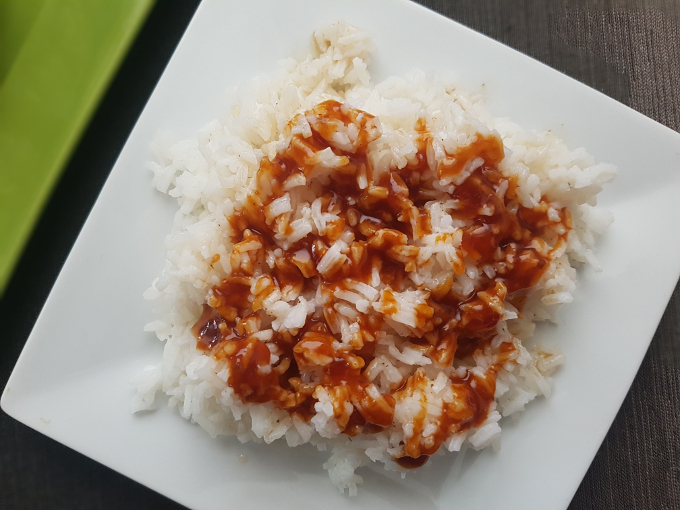
Perfect Long Grain White Rice Every Time
By: Semiserious Chefs
Serves: Varies n/a
Ingredients:
- 2 cups cold water
- 1 cup long grain white rice
- salt (optional)
- vinegar (optional)
- butter (optional)
Directions:
- This recipe can easily be doubled or tripled depending on how much rice you want to cook.
- Add cold water and rice to a medium sauce pan (or large sauce pan if you are making a lot of rice). If you want to add anything else such as salt or butter, you should do so now.
- With the lid off, bring water and rice to a boil and then cover and reduce heat to low.
- Let rice steam for 18 minutes and then remove from heat.
- With the lid still on, let the rice continue to steam away from the heat for an additional 12 minutes.
- Remove lid, fluff with a fork and serve.
*Note:
I prefer a ratio of 2 cups cold water to 1 cup long grain rice, but you can adjust that how you see fit. The more water you add the softer and more sticky the rice will be. The less water you add the firmer the rice will be.


Post a comment